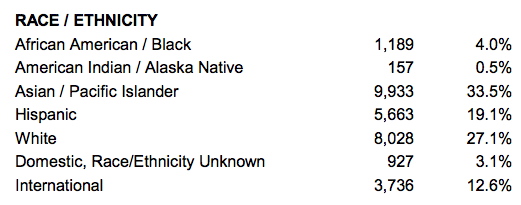David Beckworth interviews Joe Gagnon
Joe Gagnon is a former Fed economist now located at the Peterson Institute in Washington. He’s also arguably the world’s leading expert on QE. The conversation with David was excellent from beginning to end.
Here are a few highlights (from memory):
1. Gagnon’s research suggested that QE was somewhat effective at lowering long-term interest rates. That’s also the consensus view of dozens of other studies he looked at. He suggested that QE probably led to higher bond yields in the long run, which reflected the higher nominal growth of countries that engaged in more aggressive monetary stimulus. He seemed to suggest this was a rather surprising result, but I think it’s in line with the previous views of monetarists like Milton Friedman.
2. Gagnon likes NGDP targeting, and is somewhat split between growth rate and level targeting. At one point he seemed to suggest an option somewhere between those two extremes. I’d guess that reflects the behavior of the economy after 2007, when (in retrospect) a continued 5% NGDP growth rate might seem a bit too aggressive.
3. He suggested that the Fed may have been held back around 2009-10 from doing even more QE by a fear of the unknown. It was a new and untried policy instrument. Gagnon also indicated that (in retrospect) it probably would have been better to do all three or four QEs right up front. (I’m glad he said 3 or 4, as I’ve always been a bit unclear as to whether the first QE was in late 2008, or March 2009. It seems the leading expert also views the number of QEs as ambiguous. The official number was three, but it seems like there were four.)
4. David asked him about the options for monetary policy that he came up with as a researcher at the Fed during 2008-09. I kind of regret not hearing him talk about whether the Fed looked at the options for Japan that were outlined in Bernanke’s 2003 paper. There’s been a lot of criticism (from me and others) of the fact that Bernanke’s Fed did not pursue some of the more aggressive options that Bernanke recommended to the BOJ, in his famous paper that discussed the need for “Rooseveltian resolve.” (Here I’m especially thinking of price level targeting.) That’s not to say there are not good answers. Bernanke got in hot water in 2010 for suggesting we needed to raise the inflation rate (to 2%). If he had indicated a need to raise it to 3% or 4% to catch up to the trend line, the policy would have been even more controversial.
5. Gagnon gave an excellent summary of recent events in Japan. His view is similar to mine, but he’s followed things more closely and has much more knowledge of the situation. The original Abe/Kuroda push for 2% inflation was partially successful. Core inflation expectation quickly rose by about 200 basis points, from minus 0.75% to 1.25%. They needed one final push, and in early 2016 tried to do so using negative IOR. Unfortunately, the negative rate was only 0.1%, which was too little to have much effect. Even worse, there was a political backlash. That led the markets to lose confidence in the BOJ, and since then the yen has soared in value. Thus inflation expectations are now coming down. In retrospect, they would have been better off doing more QE. Gagnon even suggested buying equities as an option. He thought it was really important that the BOJ hit its 2% inflation target, and I agree. That’s not because I favor inflation targeting (I don’t) but rather because I think it’s really important for central banks to hit their targets, for credibility reasons. Unfortunately, it appears the Abe government has lost interest in this policy target.
6. Gagnon pointed out that before the Great Recession most economists thought that a 2% inflation target would be enough to keep us away from the zero bound. He also noted that early discussions of the pros and cons of a higher inflation target took account of the likelihood of hitting the zero bound. Then Gagnon said something to the effect; “Well, we now know something new”. We know that the zero bound problem can occur with a 2% inflation target. So if economists thought that 2% inflation target was optimal for the US, then that can’t possibly be the case now. Speaking for myself, I’m disappointed that so few economists are forcefully explaining why this new information suggests that we need a new target. And it does not have to be 3% or 4% inflation, it could be NGDPLT. But clearly some change is required. And yet as far as I can see the Fed seems determined to continue muddling along with a 2% inflation target, which makes their “conventional” policy tool (interest rate targeting) almost useless going forward.
7. Gagnon also did an excellent job explaining the problems with helicopter drops–it’s too effective if expected to be permanent.



